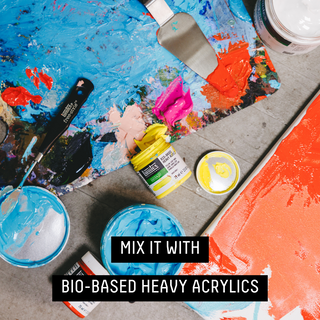Pulse of Information
Your source for the latest insights and updates.
Brush Up Your Skills: Painting Tips That Make a Splash
Unlock your creativity! Discover painting tips that guarantee a masterpiece and make your next artwork truly unforgettable.
Mastering the Art of Color Mixing: Tips for Vibrant Paintings
Mastering the art of color mixing is an essential skill for any artist looking to create vibrant and captivating paintings. Understanding the color wheel is the first step in this journey. Familiarize yourself with primary, secondary, and tertiary colors to see how different hues interact. To start mixing, always add a small amount of a color to another and gradually build up to the desired shade. Use a palette to blend the colors and experiment with different combinations, as this will help you discover new and exciting variations that can bring your artwork to life.
Additionally, consider the value and saturation of your colors when mixing. This means understanding how light or dark a color is (value) and how vivid or muted it appears (saturation). Try using a color mixing chart to keep track of your creations, and don't be afraid to keep notes on what combinations work best. Remember, layering colors can also enhance vibrancy; consider glazing techniques to create depth. By mastering these techniques, you'll elevate your paintings and express your artistic vision more vividly.

Essential Brush Techniques Every Painter Should Know
Every painter should master a few essential brush techniques to enhance their skills and produce stunning artwork. One of the foundational techniques is the dry brush method, where a brush with minimal paint is used to create texture and a sense of depth. This technique is particularly useful for adding detail to landscapes or for creating the illusion of light and shadow. Another critical technique to learn is the wet-on-wet technique, which involves applying wet paint onto wet surfaces. This method allows for beautiful blending of colors and is perfect for beginners seeking to explore the fluidity of watercolor paintings.
Additionally, mastering the stippling technique can significantly elevate a painter's work. Stippling involves using a brush or other tools to create a series of dots to build up texture and shading. It is a great way to create intricate patterns and details without overwhelming the canvas. Lastly, understanding the importance of brush pressure is crucial; varying pressure can alter the width and intensity of strokes, allowing painters to create dynamic effects. By incorporating these essential brush techniques into your practice, you can develop your unique style and improve your overall artistry.
What Are the Best Tools for Beginners in Painting?
When starting your painting journey, having the right tools can make all the difference. Beginner painters should consider investing in a few essential items to help them develop their skills with ease. A solid set of brushes is crucial; a range of sizes, including flat, round, and detail brushes, will allow for various techniques. Additionally, a good quality canvas or watercolor paper, depending on your preferred medium, is important to ensure you get the best results. Don't forget to include a palette for mixing colors and a sturdy easel to support your work as you progress.
Another fundamental tool for beginners is a selection of high-quality paints. Whether you're drawn to acrylics, oils, or watercolors, choose brands that are known for their pigments' vibrancy and consistency. It's advisable to start with a basic color palette, such as red, blue, yellow, black, and white, which offers the foundation to mix a wide range of hues. Lastly, invest in a sketchbook to practice your ideas and compositions before committing them to canvas. This combination of tools provides a strong foundation for any aspiring artist to explore their creative potential.